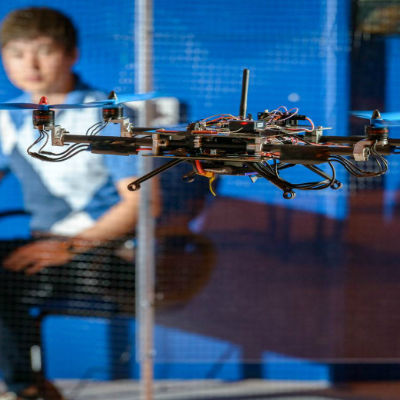You may wish to consider our Autonomous Vehicle Dynamics and Control MSc, which offers similar areas of study.
Discover other opportunities through our course finder.
The Advanced Air Mobility Systems MSc was designed to equip you with the skills required to pursue a successful career in transforming the aviation industry, applying the knowledge learned to introduce new automated and autonomous solutions, to enable a safe, orderly and expeditious integrated airspace, where uncrewed aerial systems operate alongside crewed aircraft.
Your career
The industry-led education that you received on this MSc will placed you among the most desirable candidates for recruitment into global enterprises through to smaller innovative start-ups looking for the brightest talent. Industrial contact may take place even from the Individual Research Project that enables familiarisation with our Industry Advisory Board.
Graduates from the MSc went into roles including:
- Autonomous systems engineer
- Design engineer
- Research Assistant in Advanced Air Mobility
- Applied Vision Control (KTP Associate)
Companies that employ our graduates include:
- BAE Systems
- Thales
- SAAB
- Boeing
- NATS
- Heathrow Airport
- Inmarsat
Graduates from this course were equipped with the advanced skills which could be applied to the aviation, air traffic, air transport, security, defence, and aerospace industries. This approach offered a wide range of career choices in industry, and some decide to continue their education through PhD studies available within Cranfield University or elsewhere.
Cranfield’s Career Service is dedicated to helping you meet your career aspirations. You will have access to career coaching and advice, CV development, interview practice, access to hundreds of available jobs via our Symplicity platform and opportunities to meet recruiting employers at our careers fairs. Our strong reputation and links with potential employers provide you with outstanding opportunities to secure interesting jobs and develop successful careers. Support continues after graduation and as a Cranfield alumnus, you have free life-long access to a range of career resources to help you continue your education and enhance your career.

